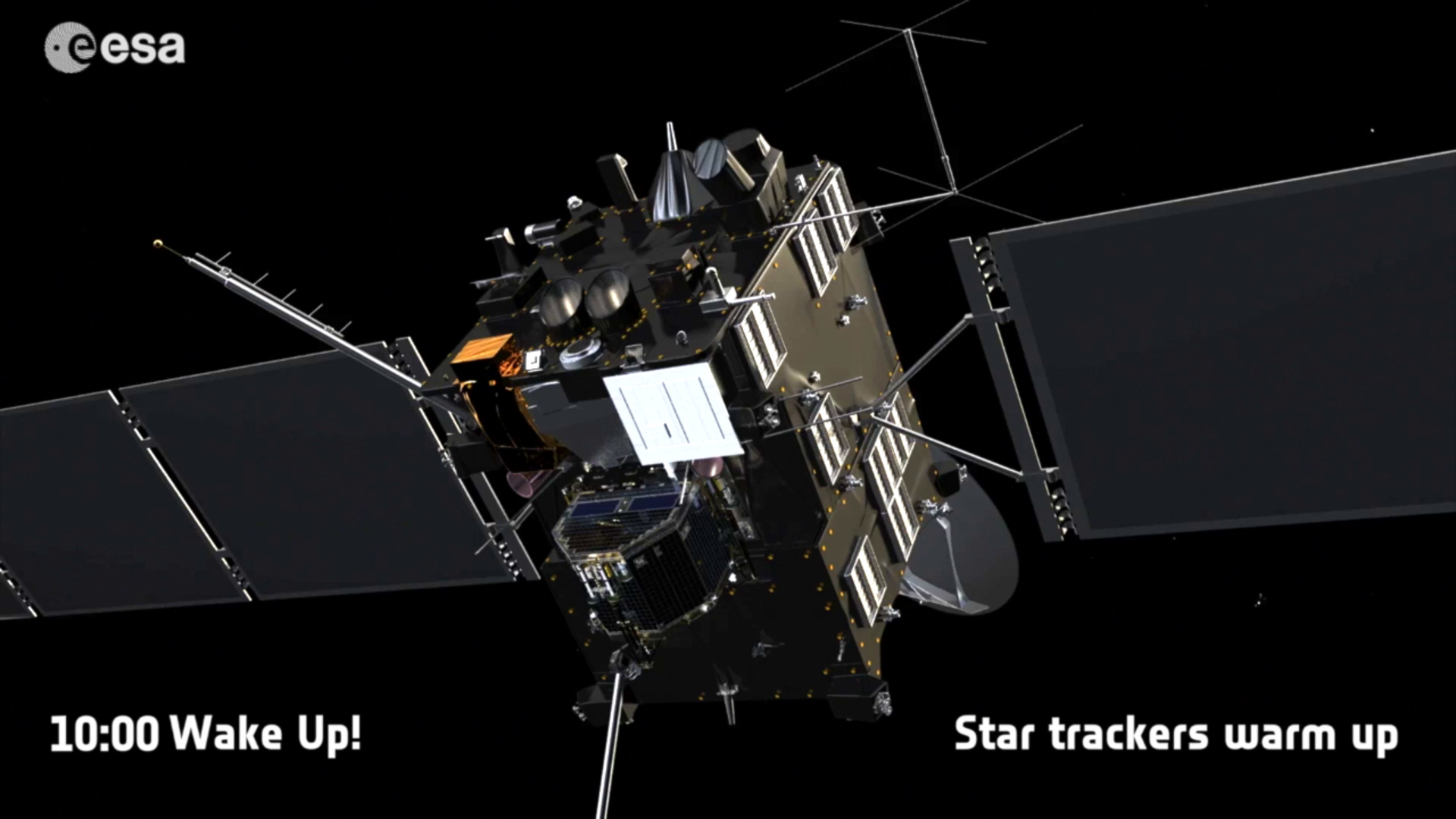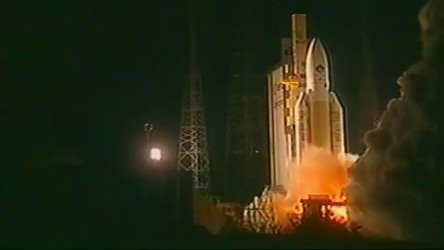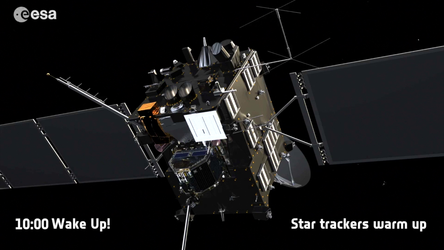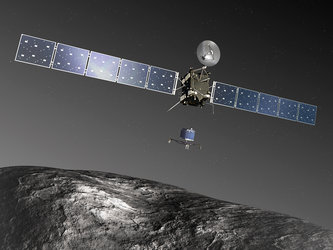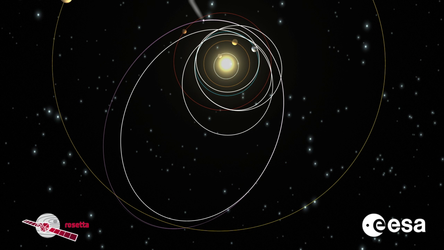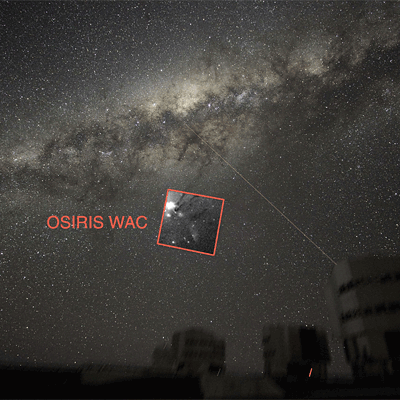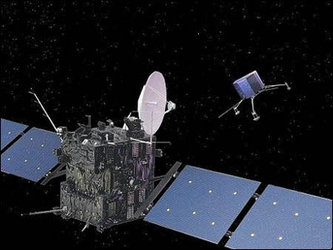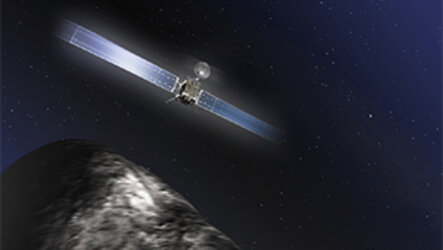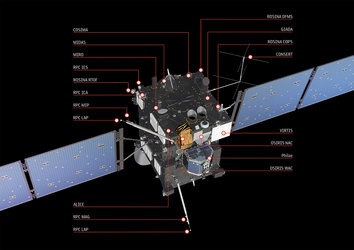The most important alarm clock in the Solar System
At 10:00 GMT on Monday, the most important alarm clock in the Solar System will wake up ESA’s sleeping Rosetta spacecraft.
Rosetta is chasing comet 67P/Churyumov–Gerasimenko and, since its launch in 2004, has made three flybys of Earth and one of Mars to build up enough speed and get on a trajectory towards the comet. It has also encountered asteroids Steins and Lutetia along the way.
Operating on solar energy alone, the spacecraft was placed into a deep space slumber in mid-2011 as it cruised far from the Sun and out towards the orbit of Jupiter. To prepare for its long sleep, Rosetta was oriented so that its solar arrays faced the Sun and put into a once per minute spin for stability.
The only devices left running were its computer and several heaters.


Access the video
Thirty-one months later, Rosetta’s orbit has brought it back to within ‘only’ 673 million kilometres of the Sun, and there is finally enough solar energy to power the spacecraft fully again. It is time to wake up.
Rosetta’s computer is programmed to carry out a sequence of events to re-establish contact with Earth on 20 January, starting with an ‘alarm clock’ at 10:00 GMT.
Immediately after, the spacecraft’s startrackers will begin to warm up, taking around six hours.
Then its thrusters will fire to stop the slow rotation. A slight adjustment will be made to Rosetta’s orientation to ensure that the solar arrays are still facing directly towards the Sun, before the startrackers are switched on to determine the spacecraft’s attitude.
Once that has been established, Rosetta will turn directly towards Earth, switch on its transmitter and point its high-gain antenna to send its signal to announce that it is awake.
Because of Rosetta’s vast distance – just over 807 million kilometres from Earth – it will take 45 minutes for the signal to reach the ground stations. The first opportunity for receiving a signal on Earth is expected between 17:30 GMT and 18:30 GMT.
Deep space tracking dishes will be listening out for the signal, starting with NASA’s ‘big ears’ – the 70 m-diameter station at Goldstone, California, followed by, as the Earth rotates, the Canberra station in eastern Australia. ESA's New Norcia 35 m antenna, in Western Australia, would be next in line to await the signal's arrival.
Whenever the signal is received, it will be relayed immediately to ESOC, ESA’s Operations Centre in Darmstadt, Germany.
This exciting moment will be announced to the world straightaway via the @ESA_Rosetta twitter account.
Continue reading below
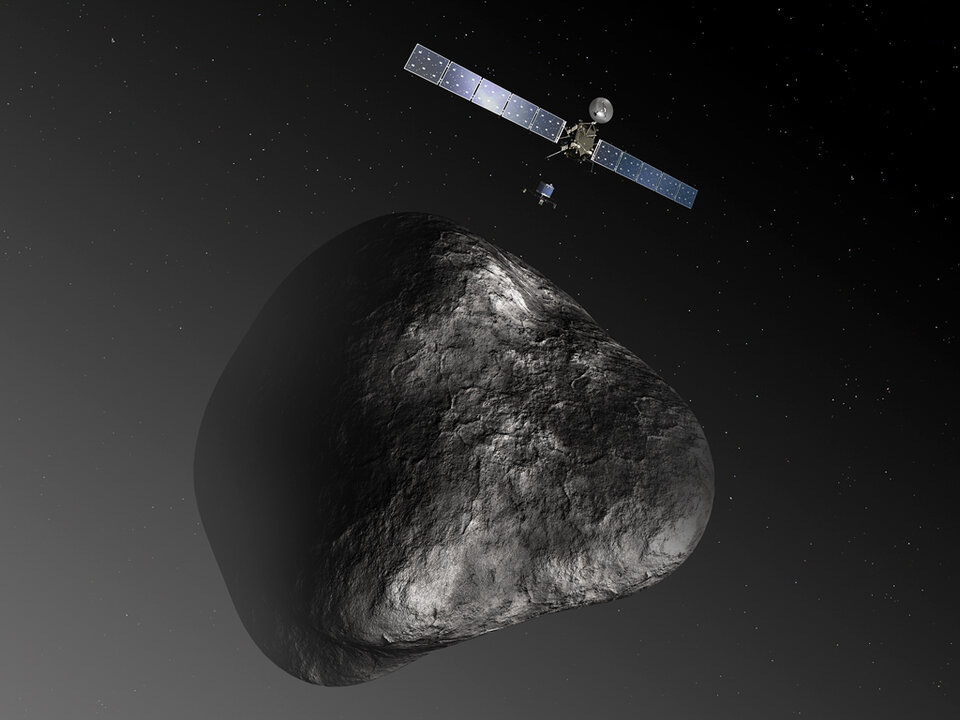
Once mission controllers have verified Rosetta’s health, each of its scientific instruments will be switched back on and checked out, an effort that will take several months as the spacecraft continues to eat up the remaining 9 million kilometres separating it from the comet.
In May, Rosetta will make a major manoeuvre to line up for arriving at its target comet in August. If all goes well, it will become the first space mission to rendezvous with a comet, the first to attempt a landing, and the first to follow a comet as it swings around the Sun.
Comets are considered to be the primitive building blocks of the Solar System and likely helped to ‘seed’ Earth with water, and perhaps even the ingredients for life. But many fundamental questions about these enigmatic objects remain, and through its comprehensive, close-up study of comet 67P/Churyumov–Gerasimenko, Rosetta aims to unlock the secrets within.
A press event will be held at ESOC on 20 January to celebrate the wake up. An overview of the day-long event can be found here. The briefings will be livestreamed at www.esa.int/rosetta and www.livestream.com/eurospaceagency.
More information
Rosetta is an ESA mission with contributions from its member states and NASA. Rosetta’s Philae lander is provided by a consortium led by DLR, MPS, CNES and ASI. Rosetta will be the first mission in history to rendezvous with a comet, escort it as it orbits the Sun, and deploy a lander to its surface. Comets are time capsules containing primitive material left over from the epoch when the Sun and its planets formed. By studying the gas, dust and organic materials associated with the comet, via both remote and in-situ observations, Rosetta should become the key to unlocking the history and evolution of our Solar System, as well as answering questions regarding the origin of Earth’s water and perhaps even life.
For further information, please contact:
Markus Bauer
ESA Science and Robotic Exploration Communication Officer
Tel: +31 71 565 6799
Mob: +31 61 594 3 954
Email: markus.bauer@esa.int
Fred Jansen
ESA Rosetta mission manager
Email: fjansen@rssd.esa.int
Matt Taylor
ESA Rosetta project scientist
Email: matthew.taylor@esa.int


